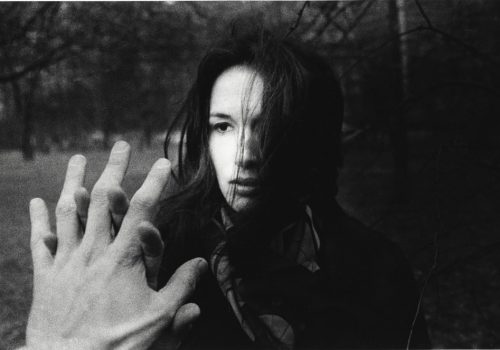As part of the exhibition Ralph Gibson: The Trilogy, 1970-1974, The Eye of Photography is offering a special edition with a small retrospective of Ralph Gibson’s career. Here you can find a selection of his most beautiful images taken during the 1970s. These are The Trilogy years, comprised of three works with a cult following today: The Somnambulist (1970), Déjà-Vu (1973), and Days at Sea (1974).
First of the three works, The Somnambulist is the only one to present text: an introduction or, more precisely, a warning. This text is addressed to the “gentle reader”. On one hand, it provides the keys to viewing an atypical piece where, from then on, words are photography, and, on the other hand, it acts as an invitation to think of the image in regards to the text. Gibson’s hand writes an invisible text on a sand-bed where vegetation is born, a metaphor of a work where everything will be born in a special alchemy from the reader’s interior and intimate dialogues. These introductory words set the spirit of the ensemble: “An oneiric sequence where all things are real. Perhaps even more so.” It is all there, a journey between dream and reality becoming confused in the same promise like the very title of the work had implied.
Déjà-Vu is the second opus of Gibson’s great work. Here, the photography tends to free itself from narrative in order to better enter into The Somnambulist through an oneiric dimension. The reality of Déjà-Vu leads us, after the oneirism of The Somnambulist, into a universe of fantasy and reminiscence, of echoes, of the resonance between pages. The same image reproduces like an obsessive, vague memory. In Déjà-Vu, space and time blend together, governed by rules of strange impossibility, such as this double page where a hand holding a gun and the body of someone supposed to fire both belong to different dates and geographies. They are visually drawn closer in a double image and, therefore, are read as unified.
Days at Sea is the final work in The Trilogy. Here, the reality offered to the reader is intimate, full of sexual impulses and affirmed fetishists. The language becomes more and more purified in black and white, where only the essential elements of the author’s desire appear, transforming the reader into a reader-voyeur. The conclusion in The Trilogy’s field of impulses is is accomplished by a sentence left discretely in French at the bottom of a white page: “The Trilogy is achieved. What impossible desire.” A confession of powerlessness before the complexity of his project? An allusion to sexual desire, which is so significant in this last opus of The Trilogy? Once more, there are multiple possible ways to read it, and even the interpretation of a failure would be enough to give the work all its weight.
It is the privilege of The Trilogy, as an open piece, to maintain the photographic work of Ralph Gibson in ambiguity. Taken individually, his images are self-contained, making him a photographer whose visual language, often copied but rarely equaled, signals one of the greatest names in American contemporary photography.
Ralph Gibson : La Trilogie, 1970-1974
From October 18, 2017 through January 8, 2018
Pavillon Populaire
121 Allée de Jerusalem
34000 Montpellier
France
















